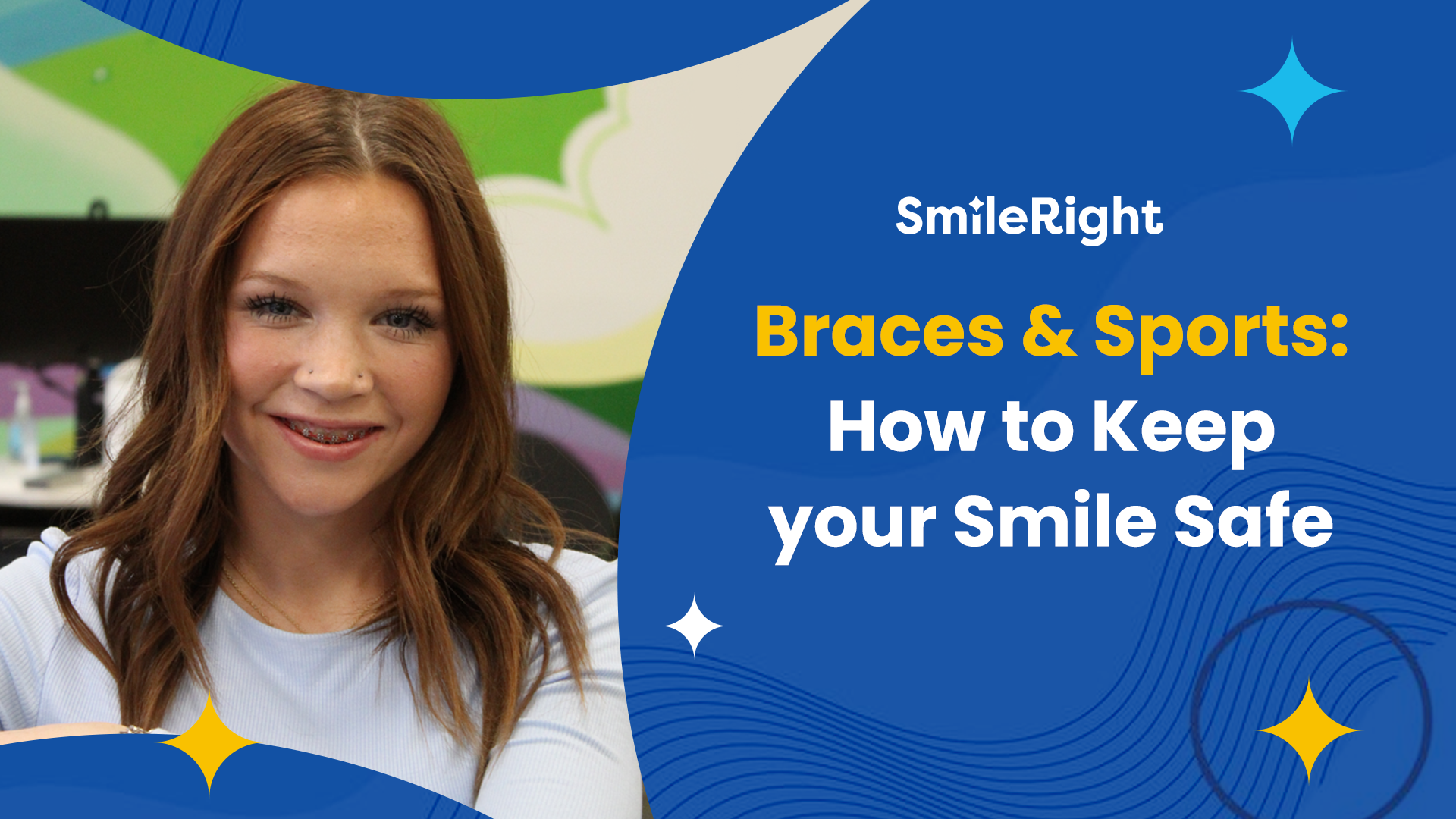Everything You Need to Know About Metal Braces

Source: Dr. Marketing
Are you considering orthodontic treatment to achieve a perfect smile? Metal braces are a popular and effective option for straightening teeth and correcting bite issues. At SmileRight in Houston, we specialize in providing top-quality metal braces that are affordable and reliable. Here’s everything you need to know about metal braces and why they might be the right choice for you.
What Are Metal Braces?

Metal braces, also known as traditional braces, consist of metal brackets and wires that are attached to the teeth. These braces work by applying continuous pressure over time to gradually move teeth into the desired position. They are made from high-grade stainless steel, which is both durable and effective in treating a variety of orthodontic issues.
Benefits of Metal Braces

Effective for Complex Cases
Metal braces are highly effective in treating severe orthodontic issues such as overcrowding, gaps, and misalignment. Unlike other orthodontic solutions, metal braces can tackle the most challenging cases with precision and reliability.
Durability
Made from strong materials, metal braces are less likely to break or fracture compared to other types of braces. This durability ensures that the braces will last throughout the entire treatment period, providing consistent results.
Cost-Effective
Metal braces are typically more affordable than other orthodontic options, making them accessible for many patients. The cost-effectiveness of metal braces means that you can receive high-quality orthodontic care without breaking the bank. We offer same day metal braces for just $2,998! Contact us today to schedule your consultation.
Precision
Metal braces provide precise control over tooth movement, allowing for optimal results. The ability to make fine adjustments to the brackets and wires ensures that your teeth move into their proper positions accurately.
Customization
With the option to add colorful elastic bands, metal braces can be customized to reflect your personality. This feature is especially popular with younger patients who enjoy personalizing their braces with different colors.
What to Expect During Treatment

Getting metal braces is a comprehensive process that involves several essential steps to ensure the successful alignment of your teeth and enhance your smile. It all begins with the initial consultation at SmileRight, where our experienced orthodontists will conduct a thorough evaluation of your teeth, capturing X-rays, photos, and impressions to develop a personalized treatment plan tailored to your unique orthodontic needs. This critical stage sets the foundation for your orthodontic journey and allows us to understand the specific requirements of your case.
Following the initial consultation is the placement phase, where the metal brackets are carefully bonded to your teeth and the archwire is threaded through them. This meticulous process, which is both painless and precise, typically takes around 1-2 hours and plays a vital role in the effectiveness of your treatment. The proper placement of the brackets and wires ensures that your teeth are guided into the desired position over the course of your treatment.
Regular adjustments are an integral part of the orthodontic process and are scheduled every 4-6 weeks at our office. During these appointments, our orthodontist will tighten the archwire and make necessary adjustments to ensure that your teeth are moving correctly as planned. These adjustments are crucial for maintaining the progress of your treatment and addressing any concerns that may arise throughout the course of wearing braces.
Maintaining good oral hygiene is paramount during orthodontic treatment to ensure the health of your teeth and gums. It is essential to brush and floss regularly to keep your teeth and braces clean, reducing the risk of cavities and gum disease. Our team will provide you with specific instructions and tips to help you care for your braces effectively, supporting the success of your orthodontic treatment.
The duration of your orthodontic treatment may vary depending on the complexity of your case, with most patients wearing braces for an average of 18-24 months. The duration of your treatment plan will be discussed during your initial consultation, and progress will be monitored closely at each adjustment appointment to track the alignment of your teeth and ensure the successful outcome of your orthodontic journey.
Do Metal Braces Hurt?

It is common to experience some discomfort when you first get braces or after adjustments. This discomfort is usually mild and can be managed with over-the-counter pain relievers and orthodontic wax to protect your cheeks and lips from irritation. The discomfort typically subsides within a few days as your mouth adjusts to the braces. If you experience persistent pain or other issues, our team at SmileRight is always available to provide support and solutions.
Life with Metal Braces
Living with metal braces requires some adjustments, but it doesn't have to be difficult. Here are a few tips to make your experience more comfortable:
Avoid Hard and Sticky Foods
Foods like popcorn, hard candies, and chewing gum can damage your braces. Stick to softer foods and cut fruits and vegetables into smaller pieces. Avoiding problematic foods helps prevent damage to the brackets and wires, reducing the need for emergency visits.
Stay Hydrated
Drinking plenty of water helps keep your mouth clean and reduces the risk of cavities. Staying hydrated is important for overall oral health and helps wash away food particles that can get stuck in your braces.
Use Orthodontic Wax
If your braces are causing irritation, apply orthodontic wax to the brackets to prevent sores. Orthodontic wax creates a smooth barrier between your braces and the soft tissues of your mouth, providing relief from irritation.
Wear a Mouthguard
If you play sports, wearing a mouthguard will protect your braces and teeth from injury. A mouthguard cushions any impact, reducing the risk of damage to your braces and preventing dental injuries.
Common Questions About Metal Braces

How do I clean my teeth with braces?
Cleaning your teeth with braces requires a bit more effort. Use a soft-bristled toothbrush and fluoride toothpaste to brush around the brackets and wires. An interdental brush can help clean between the braces and under the wires. Don’t forget to floss daily using a floss threader or special orthodontic floss to reach between your teeth and under the wires.
Can I play musical instruments with braces?
Yes, you can still play musical instruments with braces. However, you might need some time to adjust, especially if you play wind instruments. Orthodontic wax can help make playing more comfortable by preventing the braces from irritating your lips.
Will braces affect my speech?
Braces can cause a slight lisp or change in speech initially, but most people adapt quickly. Practicing speaking and reading aloud can help you adjust faster.
What if a bracket or wire breaks?
If a bracket or wire breaks, contact SmileRight immediately. We will schedule an appointment to repair the damage. In the meantime, orthodontic wax can help cover any sharp edges and prevent irritation.
Why Choose SmileRight for Your Metal Braces?
At SmileRight, we are committed to providing exceptional orthodontic care at an affordable price. Our metal braces cost only $2,998, making quality treatment accessible for everyone. We accept major insurance plans, including Aetna, Delta Dental, Cigna, MetLife, and Humana, to help make your treatment even more affordable.
Our experienced orthodontists and friendly staff are dedicated to making your experience as comfortable and successful as possible. With our state-of-the-art technology and personalized treatment plans, you can trust SmileRight to help you achieve the smile you’ve always wanted. Our team is always here to answer your questions and provide the support you need throughout your treatment.
The Importance of Regular Orthodontic Check-Ups

Regular check-ups are crucial during your orthodontic treatment. These appointments allow your orthodontist to monitor your progress, make necessary adjustments, and ensure that your teeth are moving as planned. Skipping appointments can delay your treatment and lead to complications. At SmileRight, we make it easy to stay on track with convenient scheduling and friendly reminders.
Schedule Your Consultation Today!

Are you ready to start your exciting journey towards achieving a beautiful and confident smile? Contact SmileRight in Houston today to schedule your initial consultation and take the first step towards transforming your smile. Let our experienced team help you achieve the Right Smile and the Right Price with our top-of-the-line metal braces, designed to give you the perfect smile you've always wanted. We can't wait to welcome you and look forward to seeing you soon!



